Olympian pole vaulter Eliza McCartney leaps to the stars for a living
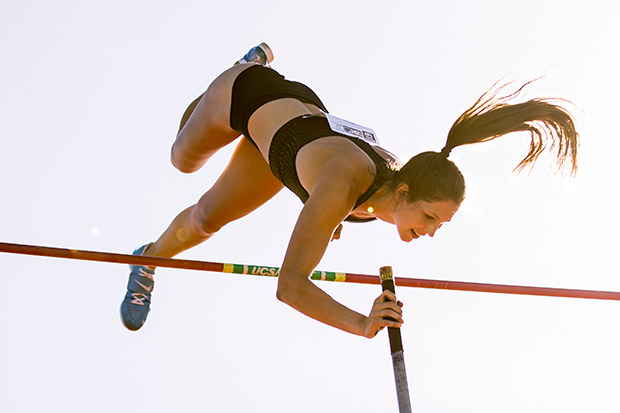
Pole vaulting requires energy, endurance, timing, technique, strength and control. According to Olympian Eliza McCartney, it’s also fun.
Words: Heather Kidd Photos: Alisha Lovrich
A few years ago, Eliza McCartney was watching the movie Eddie the Eagle with her family. The film tells the story of Michael Edwards, aka Eddie the Eagle, who in 1988 represented Britain in ski jumping at the Winter Olympics. Despite finishing in last place, he became an unlikely global hero.
Eliza recounts that she turned to her parents during the movie and said, “How do you even start to ski jump? It’s crazy.” Her parents’ response? “That’s what everyone says about pole vaulting.”
The art of pole vaulting is now second nature to the 2016 Olympic bronze medallist who took up the sport at 14. As curious as she was sporty, she’d give it a go if an activity caught her interest. “Touch rugby and netball were two of my favourites, especially netball,” she says. “Among others I tried were orienteering, water polo, squash and rugby. Rugby just the once.”
She was also a talented high jumper before pole vaulting caught her eye. “It looked like fun,” she says.
Like Eddie the Eagle learning to ski jump, it was about the small steps when Eliza started pole vaulting. “Eddie started with tiny jumps, and as he mastered those, he moved on. It’s essentially the same in pole vaulting. You start in a small way.”
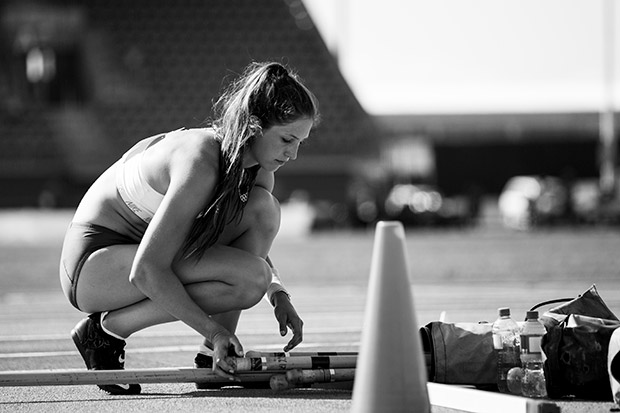
She says that it’s not necessary to bend the pole during those initial stages. “You start with a short pole that won’t bend, then walk or run in only a couple of steps, learning how to take off without the pole bending. You learn how to hold the pole and plant it, and when you’re ready, you move to a pole that’s soft and bends easily, but you’re still hardly getting off the ground. It’s very progressive. It’s about slowly moving further back on the runway and onto bigger poles to get slightly higher heights.”
A pole vaulter must complete a series of specific actions; run-up, take-off, swing and invert, simultaneously pulling with the arms (for more height) and turning so the stomach faces the bar. Once up and rotated, a push off at the top helps gain extra height.
Eliza’s early days of slow, small steps quickly became giant strides. In 2016, five years from her initial attempts at pole vaulting, she was named in the Olympic team to represent New Zealand in Rio de Janeiro. It was also her first year competing as a senior internationally and taking part in the world’s biggest sporting event could have been overwhelming.
But the 19-year-old from Auckland’s North Shore was as poised as any veteran athlete. She was delighted to be at the games, content to be the underdog, and realistic about her chances. “I had no expectations, and I was completely thrilled to make the top 12 and go through to the final.”
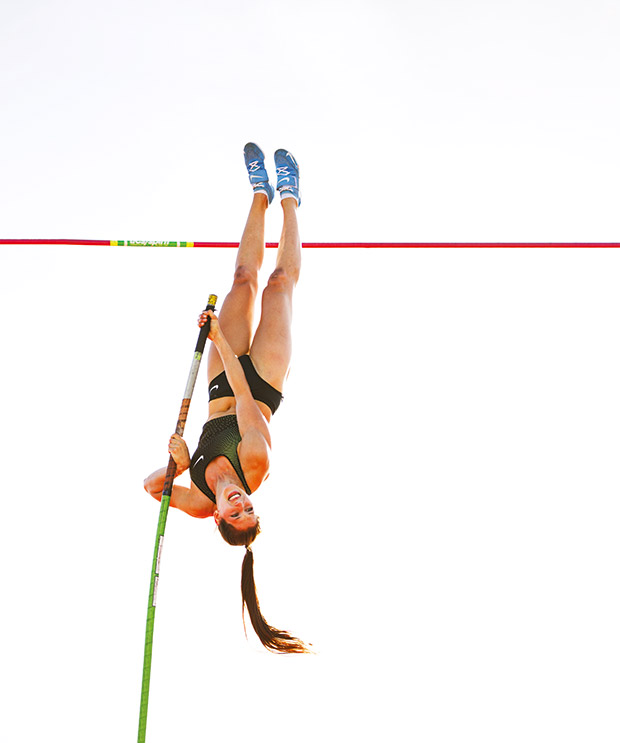
In the final round, she cleared her first jumps at 4.50 metres, 4.60, 4.70 and 4.80 before missing attempts at 4.85. Eliza’s faultless first four jumps put her in medal contention, the underdog suddenly one of the event’s top dogs, and she finished third to claim the bronze medal. She also wrote herself into the record books, the youngest-ever medallist in women’s Olympic pole vault.
So, what does it feel like to stand on a runway, pole in hands, looking 30 to 40 metres down the track to where the crossbar is suspended?
“There’s a lot of adrenaline. It’s about focusing the energy, making sure you get the little things right, because when you start running, you need to hit your marks,” says Eliza. “Pole vaulting is very controlled. All the energy and velocity you’ve created — it’s about trying to transfer as much as you can into the pole to give you more energy at the top end.”
A crucial aspect of the pole vault technique is timing. “The actual jump goes quite fast. If you get the timing right, the pole unbends when you push off the top to give you maximum height. You feel that energy of almost being flung — although flung isn’t a word I like using because it’s not as though you’re being launched into the air with no control over what’s going on. But you do feel the force. You feel it shoot you up and over the bar.”
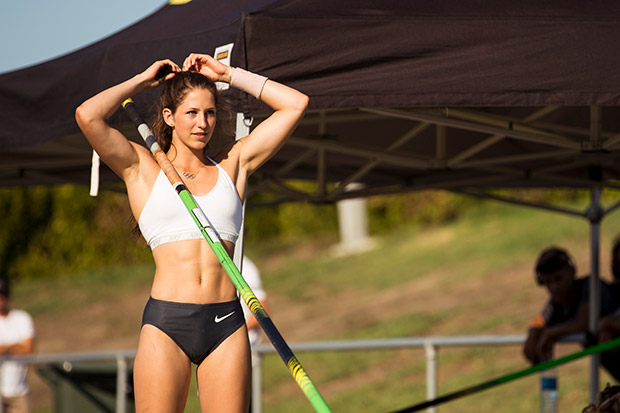
While a vault feels fast on the way up, the fall seems slower. “In those couple of seconds before you land on the mat, there can be a lot of processing going on. You can see whether the bar is still on, which is why you often see athletes celebrating before they land.”
If pole vaulting sounds technical, that’s because it is. Indeed, Eliza says it’s the most technical sport she’s been involved in. “Pole vaulters tend to peak in their late 20s and 30s because it takes time to develop technique and build on it, and to add strength and speed. It means athletes can be well into their career before they start refining their technique.”
It’s been more than a year since Eliza, now aged 25, has done any pole vaulting, Achilles and hamstring injuries keeping her quite literally grounded. She’s used the time to change the way she trains and to bring people into her team who are more specific to her needs as an older athlete.
“It’s working well, and I’m in a great space. There’s a plan to get me back competing; the goal is to have me at my best in Paris in 2024.”
Meantime, it’s about enjoying what she does. “The changes I’ve made have also been about loving the sport. This year is about having fun, not making it any more complicated than that. It can be easy to forget as an elite athlete that sport is about the experience and enjoying what you do.”
ON THE UP
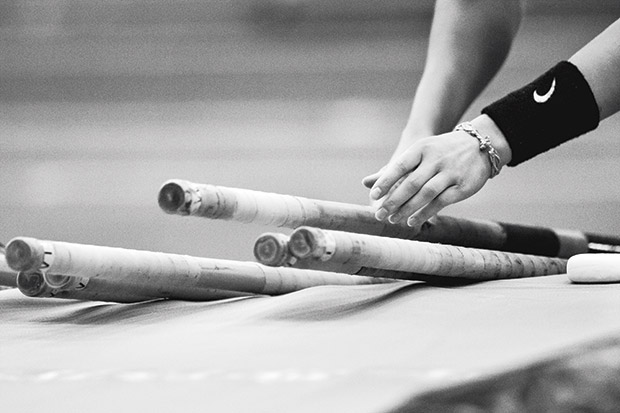
Poles for pole vaulting are made of either fibreglass or a mix of fibreglass and carbon fibre, and they must be a one-piece construction. Athletes can choose their poles’ length, diameter, and flexibility and use as few or as many as they wish during a competition.
“Athletes need shorter poles for training and warm-ups, moving to longer poles once we’re on longer run-ups. My competition poles are 4.6 metres (15 feet, one inch), and I have a range of stiffnesses and weight ratings,” says Eliza.
“At the beginning of a comp, while warming up, we’re on softer poles that bend more easily. As we get more into a comp or as our adrenaline increases, we move onto bigger, stiffer poles. You can change poles as often as you like during a comp.”
Athletes opt for stiffer poles as the bar height increases; it’s advantageous to be on the stiffest pole one can handle.
RECORD HIGHS
The women’s outdoor pole vault world record of 5.06 metres was set in 2009 by two-time Olympic champion Yelena Isinbayeva from Russia. Only two other women have come near that height outdoors: Russia’s Anzhelika Sidorova, representing ANA (Authorized Neutral Athletes), recorded 5.01 metres last year, and American Sandi Morris cleared 5.0 in 2016.
Eliza’s best jump is tantalizingly close to the five-metre mark. In 2018 she cleared 4.94 metres, the highest (outdoor) jump by a female pole vaulter in the world that year; the fifth highest (outdoor) jump ever.
Eliza is confident she can jump 5.0 and maybe get close to or break the world record.
“I think I have the components, but I haven’t been able to push to that because I’ve had years of stop-start due to injuries. In a perfect world, if I can get things right consistently, I like to think I can realize my potential.”
Love this story? Subscribe now!
 This article first appeared in NZ Life & Leisure Magazine.
This article first appeared in NZ Life & Leisure Magazine.
